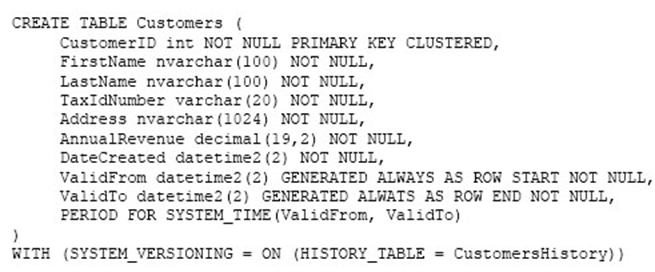

Note: This question is part of a series of questions that use the same or similar answer choices. An answer choice may be correct for more than one question in the series. Each question is independent of the other questions in this series. Information and details provided in a question apply only to that question.
You create a table by running the following Transact-SQL statement:
You need to return normalized data for all customers that were added in the year 2014.
Which Transact-SQL statement should you run?
A.
B.
C.
D.
E.
F.
G.
H.
New_user
Highly Voted 5 years, 6 months agoPrides
5 years, 4 months agoOndaenergetica
5 years, 4 months agoOndaenergetica
5 years, 4 months agoanonimdom
5 years, 4 months agoMarcusJB
5 years, 4 months agoBillybob0604
Most Recent 4 years, 5 months agoSimSql
4 years, 6 months agoVermonster
4 years, 5 months agoVermonster
4 years, 5 months agoAndy7622
4 years, 6 months agosunz_1
4 years, 9 months agoAghie
4 years, 9 months agoBartek
5 years, 9 months agoTr4ckz
5 years, 8 months agomlourinho
5 years, 7 months agoAndy7622
4 years, 6 months ago